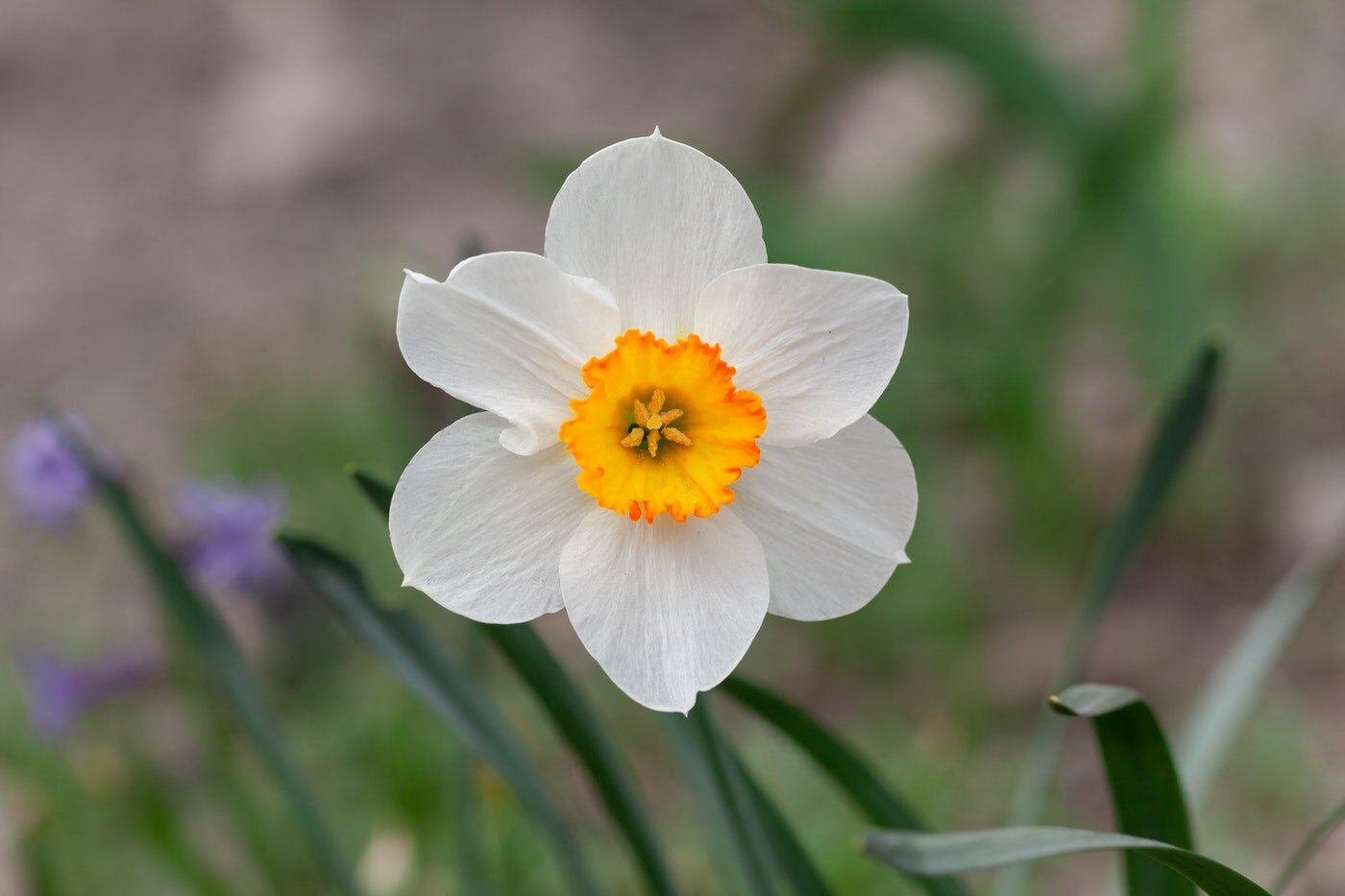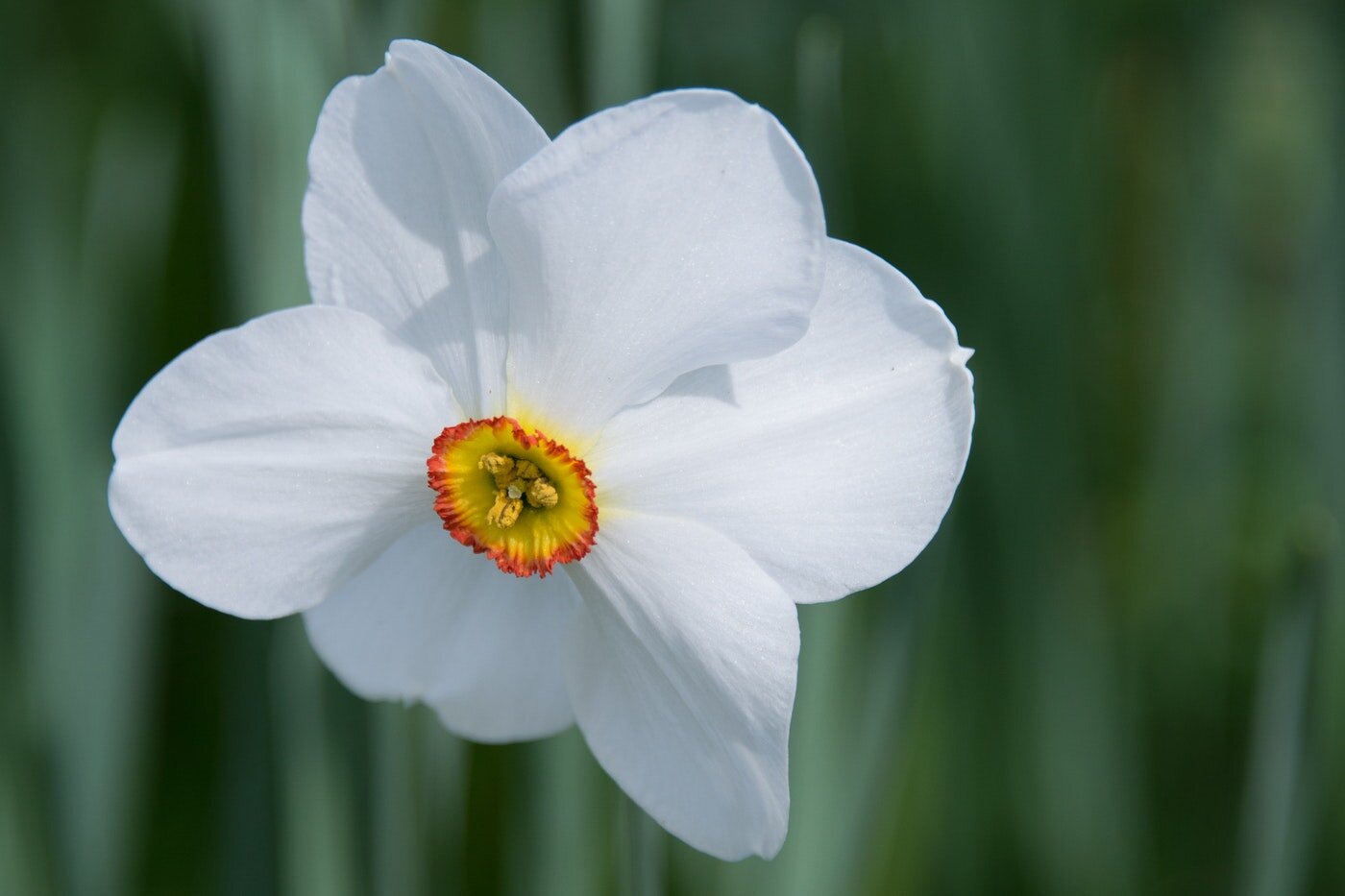Daffodils (Narcissus) are one of the most beloved flowers of spring. A sign that winter is finally, blessedly retreating, this little flower is easy to get emotionally and aesthetically attached to. There’s more to this flower than its cheery face, though. Daffodil symbolism also has a rich and interesting history, especially in the west of Britain.
The daffodil is the national flower of Wales, and it’s worn every year on St. David’s Day on March 1st. A less rich and interesting fact is that the daffodil wasn’t chosen for any special historical significance.
Historically, the national flower was the leek. David Lloyd George, who in 1916 became the only Welsh person to serve as Prime Minister, advocated for the daffodil instead, however, and it caught on.
The Farmer’s Almanac says that there’s an old Welsh legend that if you see the first daffodil of the season, you’ll “be blessed with wealth in the coming year.”
Even more interestingly, commercial growers in Wales harvest daffodils for galantamine, which is used to treat Alzheimer’s. Thanks, daffodils and thanks, daffodil growers.
In a nod to the flower’s importance, The Prince of Wales used the daffodil to put a spin on the traditional peppercorn rent. His estate leases more than 100 acres of unenclosed land in the Isles of Scilly, part of his Cornwall estate, to a wildlife trust for a rental price of one daffodil a year. In 2015, he asked the same rent for a lease on a quarry located on his estate.
What Do Daffodils Symbolize
The symbolism of the daffodil is bound up with the story of Narcissus. Which will seem unrelated to flowers if you haven’t heard it, but hang in there. Ovid’s Metamorphoses tells us that Narcissus was a beautiful teen—the son of the nymph Liriope and the river Cephissus. The prophet Tiresias tells his mother that he will grow to an old age, but only if he fails “to recognize himself.”
Lots of people fell in love with Narcissus, but Narcissus, like many a beautiful teen, was conceited and uninterested. The nymph Echo fell in love with him but was at an extra disadvantage because the goddess Juno had cursed her. (Sidebar: Echo had colluded with Jove and various other wood nymphs to stall Juno whenever she got close to catching Jove and the nymphs in the act. Greek mythology is a dumpster fire of sexual politics.)
Juno cursed Echo to only repeat the last words that other people have said. When she approached Narcissus, she could only repeat what he’d said to her, and the meeting did not go well. And by that I mean Narcissus tells her “[b]etter death than such a one should ever caress me.” So don’t feel too badly for what’s about to happen to Narcissus.
Rejected, Echo hides in the forest and wastes away until all that remains of her is her voice. Ovid tells us that another, unnamed person whom Narcissus slighted prays to the gods to deny Narcissus whoever he ends up falling in love with. The goddess Nemesis takes up the charge and causes him to fall in love with his own reflection.
And so, Narcissus ends up wasting away by a pool of water, unable to drag his eyes away from the beautiful teen reflection he loves. When he dies, the gods turn him into the flower that bears his name (see? We got there in the end).
Ovid’s point is that of all the perils of being a beautiful teen, vanity and cruelty should be avoided most. The point for flower-lovers is that the daffodil has a longstanding association with conceit and—wait for it—narcissism.
Daffodil Flower Meaning in the Language of Flowers
If you’re not familiar with the language of flowers, it’s a coded language the Victorians made up to express romantic thoughts and feelings that they didn’t want to say with their human mouths.
In this language, they seem to have carried on the association of narcissi with vanity. They also, however, gave it a bit of a positive spin.
The Daffodil Society notes that in flower language, the daffodil signifies esteem and regard. Language of Flowers, beautifully illustrated by Kate Greenaway and published in 1884, also gives “regard” as the meaning of a daffodil. The book includes Nicholas Drayton’s poem “Arrangement of a Bouquet,” which offers these lines about the flower:
“The Daffodil most dainty is,
To match with these in meetness;
The Columbine compared to this,
All much alike for sweetness.”
It’s not a great poem. For you poetry nerds, rest easy that Greenaway does also include Wordsworth’s much, much better work “I Wandered Lonely as a Cloud.” But while that poem famously features daffodils, it has less to say about their meaning than it does about Wordsworth’s own theories about the power of recollected emotion.
The Daffodil Society helpfully reminds us that symbolism is not only varied, but culturally dependent. They point to a French language of flowers postcard that relates daffodils to hope. In China, they say, the daffodil signifies good fortune, while in Japan it means “mirth and joyousness.”
White Daffodils Symbolism and Meaning
Daffodil symbolism is especially wide-ranging in its relationship with death. Because of its springtime blooms, Christian traditions often adopt the daffodil as an Easter symbol, representing Jesus’ death and resurrection.
Botanists Riklef Kandeler and Wolfram R. Ullrich explain that in China, people give daffodils at the New Year as a symbol of a renewal of strength.
In Medieval Europe, however, it was considered an omen of death if one drooped while you looked at it. In Greek mythology, according to Kandeler and Ullrich, daffodils grew on the banks of the river Styx. They say that Zeus used a narcissus to “lure Persephone” away from her friends so his brother Hades could kidnap her and take her to the underworld. Again, just a dumpster fire here.
These many legends and traditions connect the white daffodil to other white flowers that usually symbolize death, but also spiritual rebirth and purity.
Yellow Daffodil Flower Meaning and Symbolism
Yellow daffodils have more recently become associated with cancer care. Each spring, organizations like Marie Curie Cancer Care, the Canadian Cancer Society, the American Cancer Society and others sell flowers and daffodil pins as fundraisers for cancer research and support.
First used in fundraising campaigns by the Canadian Cancer Society in the 1950s, the daffodil became a symbol of hope. Because of this connection, it now carries associations with resilience, renewal and strength.
Neat fact! Fittingly, in 2018, research out of Belgium demonstrated that daffodils contain a chemical called hemanthamine that has anti-cancer properties and is currently under investigation.
Pink Daffodil Meaning and Symbolism
According to Wisconsin Horticulture, if you “want a pink daffodil, you may have to use your imagination.” They explain that the pink cultivars we see are actually “more of an apricot or peach” or even coral or salmon because they’re all tinged with yellow.
Pinkish though they may be, you can associate their soft colours with any of the qualities people use other pink flowers to represent. Think grace, first love, sweetness, comfort or happiness, for example.
Remember that the meanings of flowers change over time and between cultures. If pink flowers have a personal meaning for you, don’t be afraid to be playful with what you think they symbolize.
Purple Daffodil Meaning and Symbolism
People ask about the meaning of purple daffodils, but that’s one thing we can’t play around with. That’s because no purple daffodils exist. If you’re looking for a purple springtime flower, you’ll have lots of others to choose from. What those flowers symbolize, however, is a subject for another time.
Feature image: Julia Filirovska; Image 1: Pixabay

